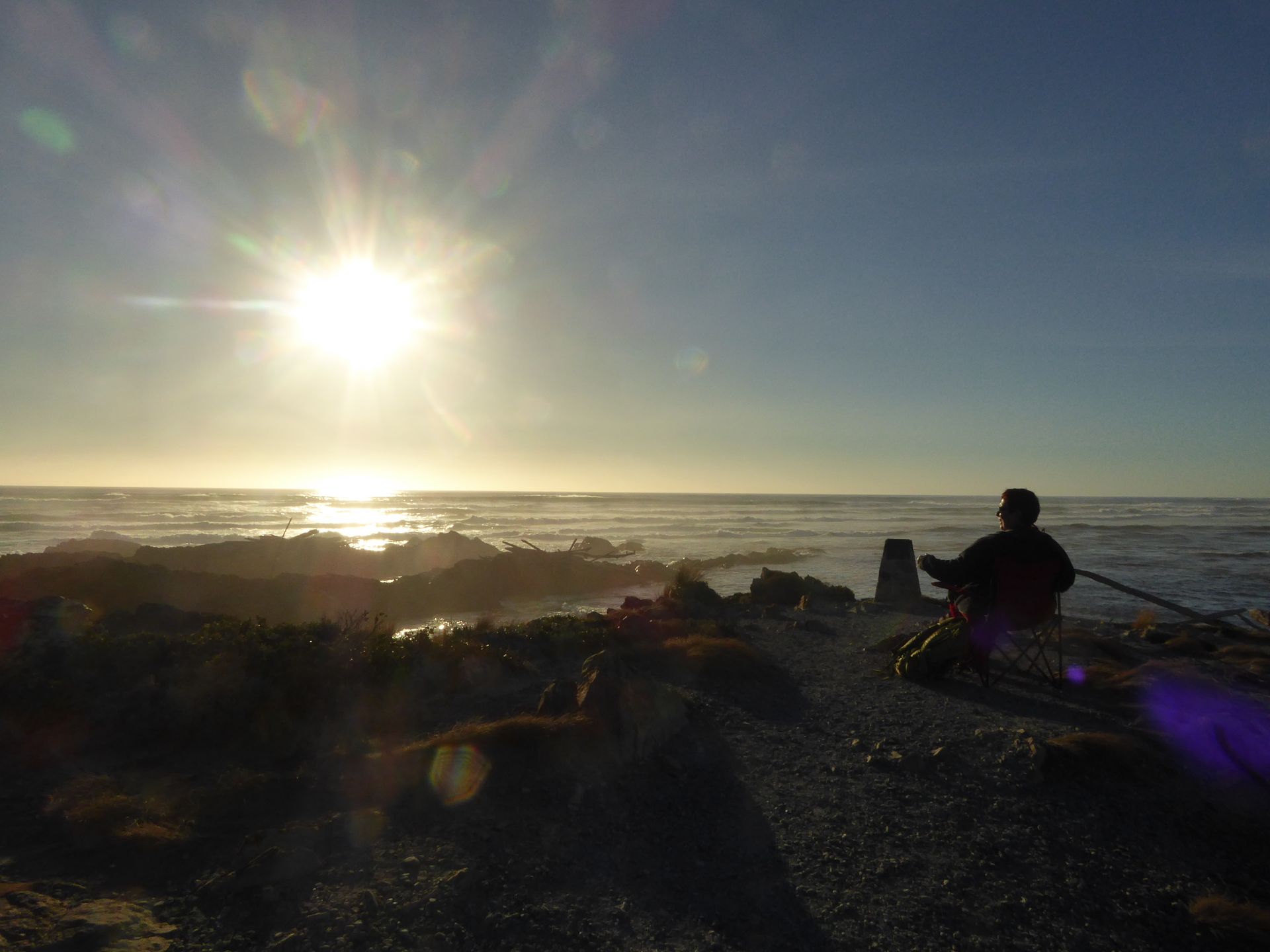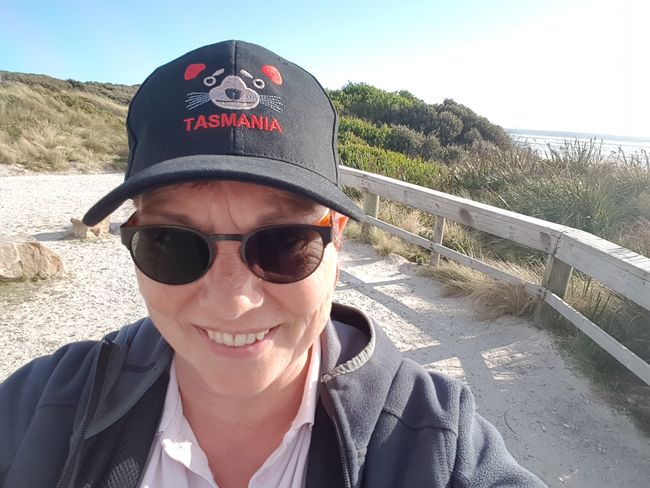
TASMANIEN - 3 Wochen solo im Camper
vakantio.de/tasmanienimcamper
Devils@Cradle and further southwest: Strahan is waiting!
ಪ್ರಕಟಿಸಲಾಗಿದೆ: 06.02.2018
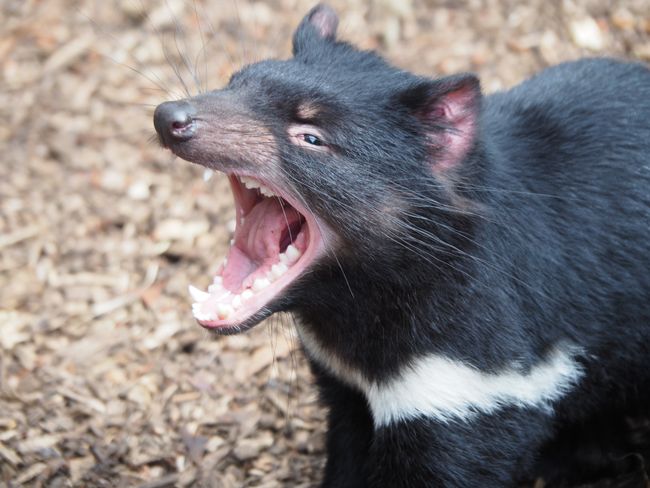
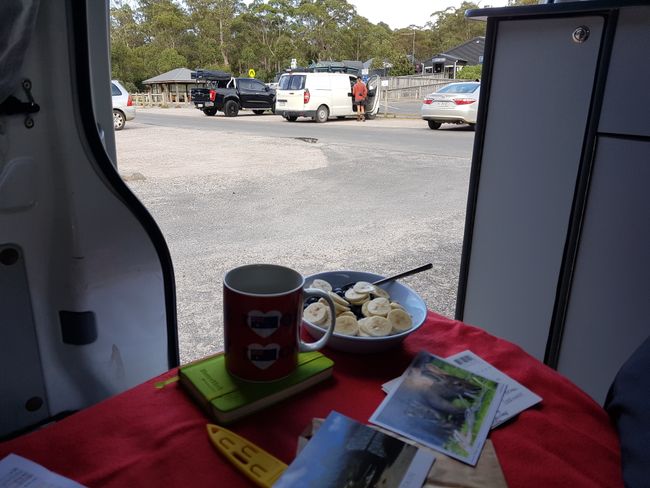
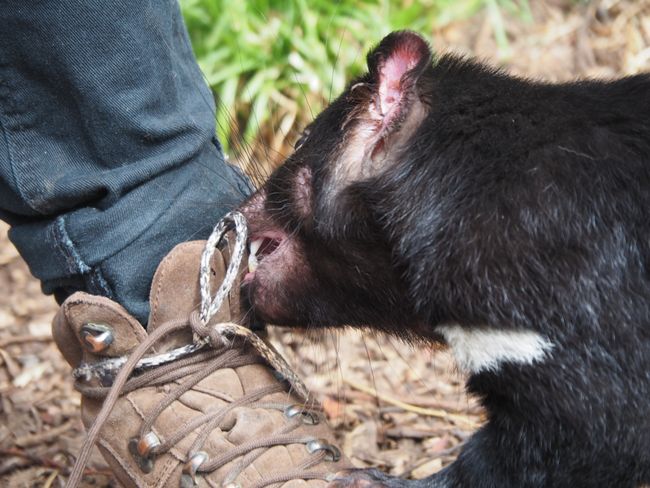
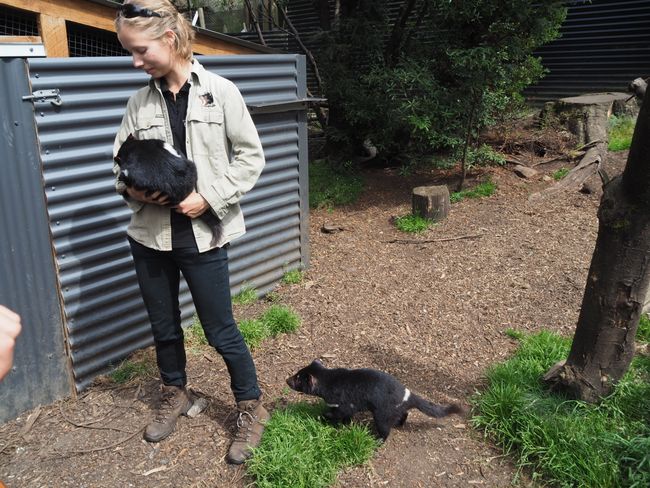
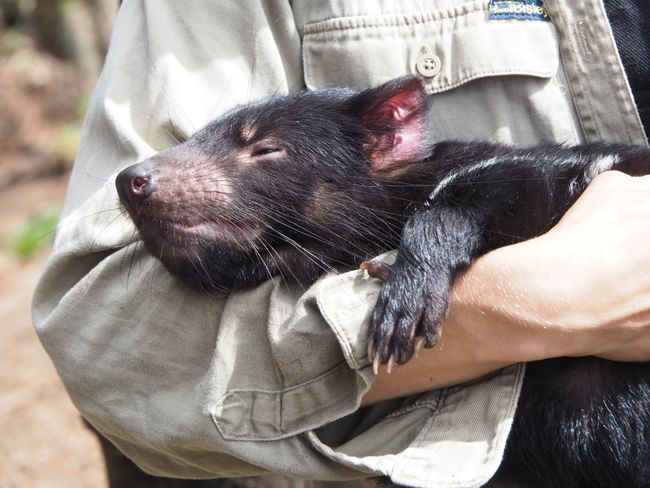
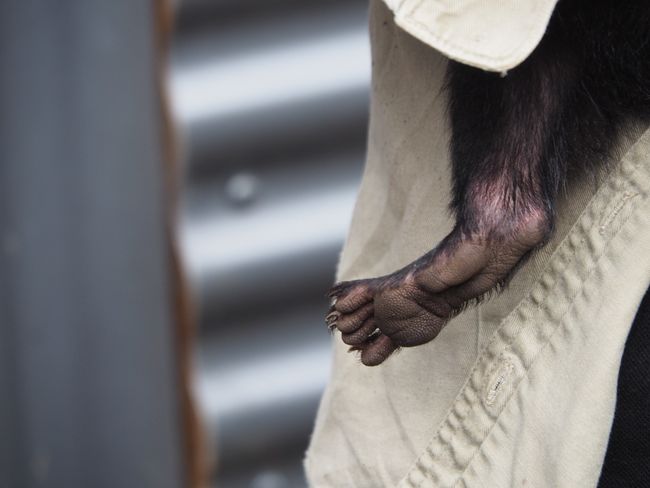
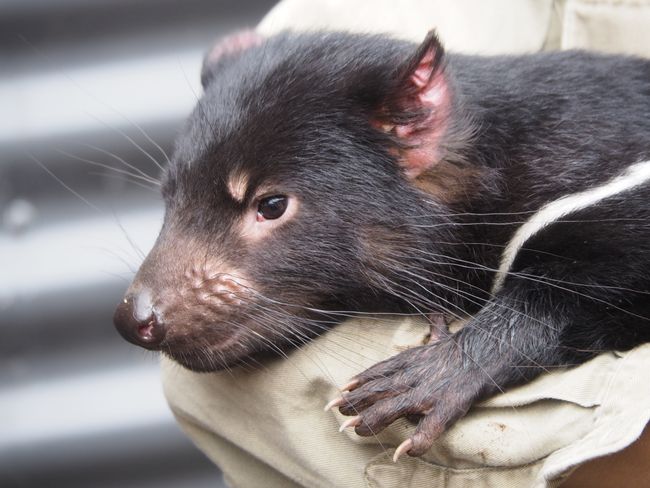
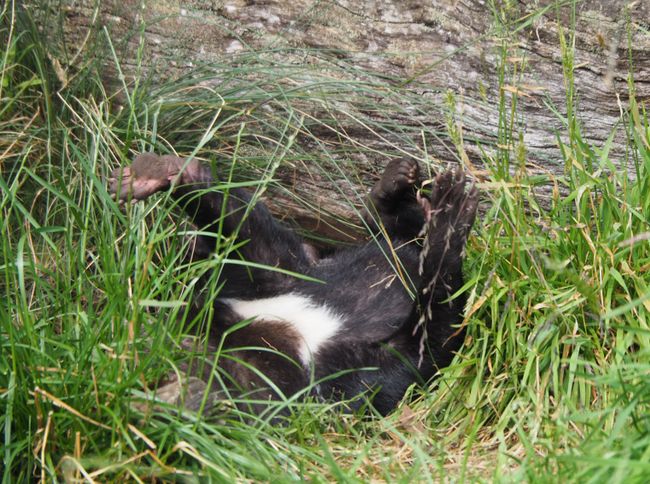
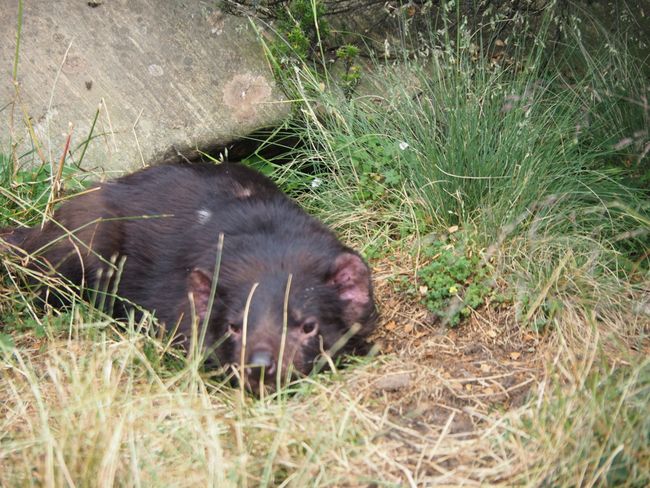
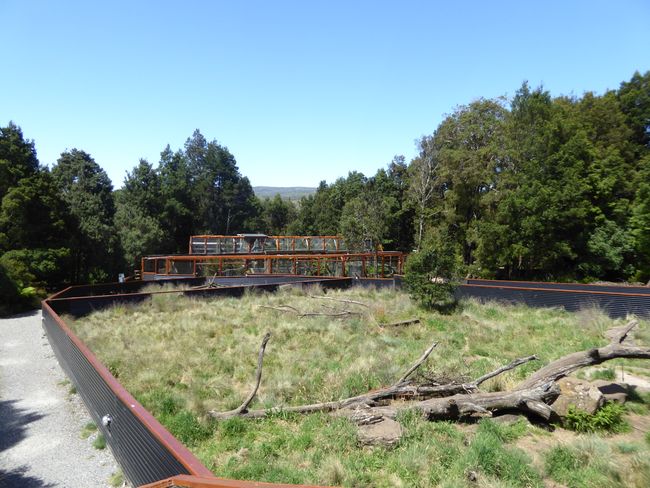
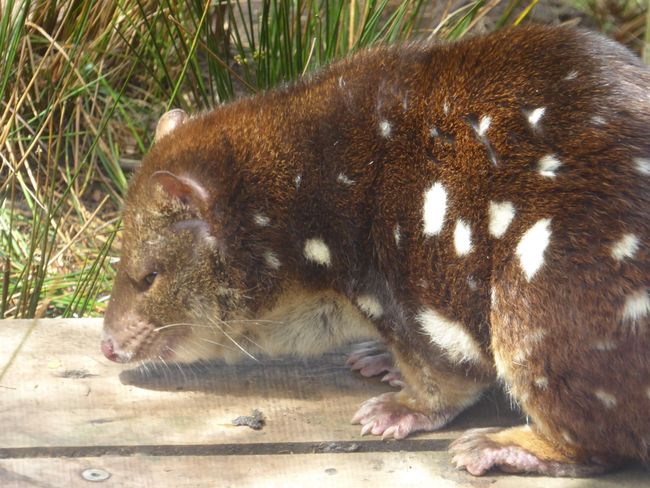
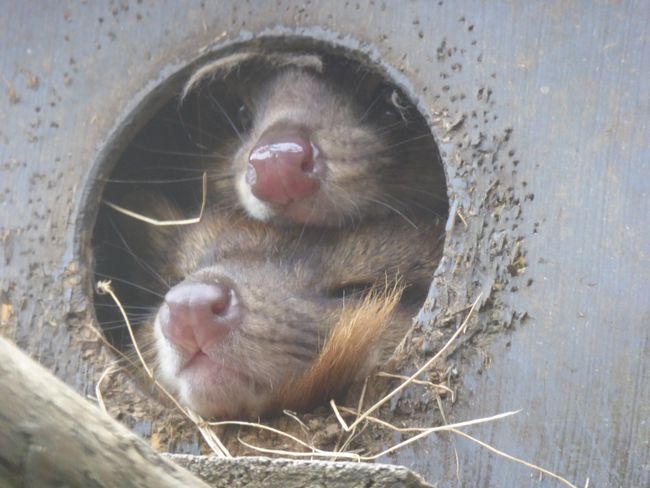
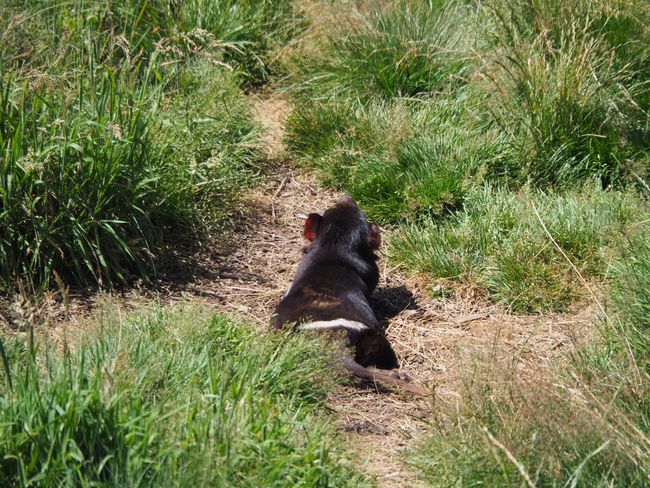
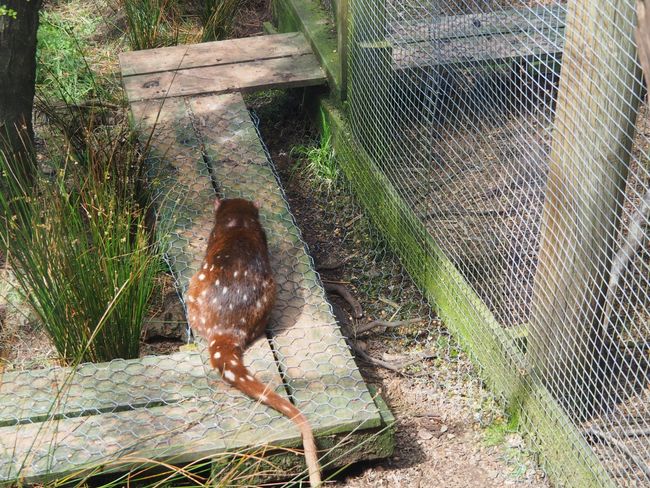
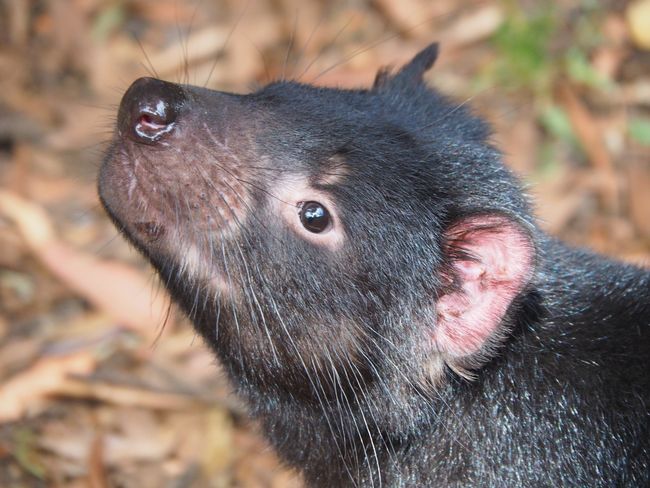
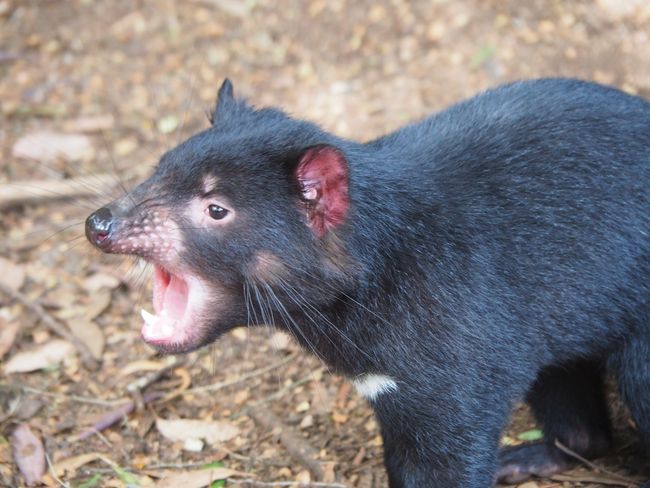
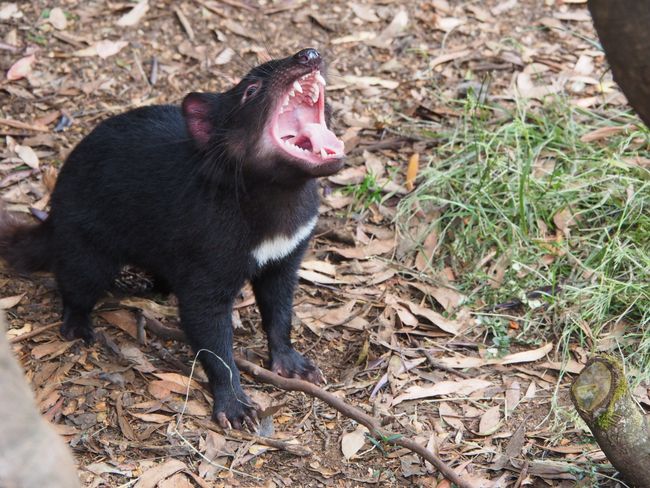
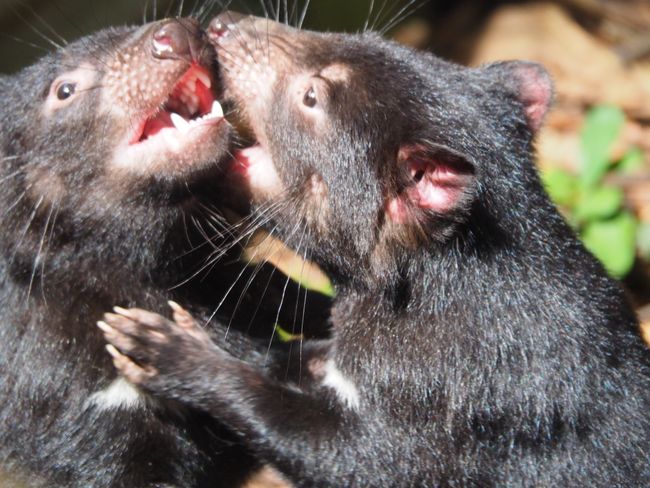
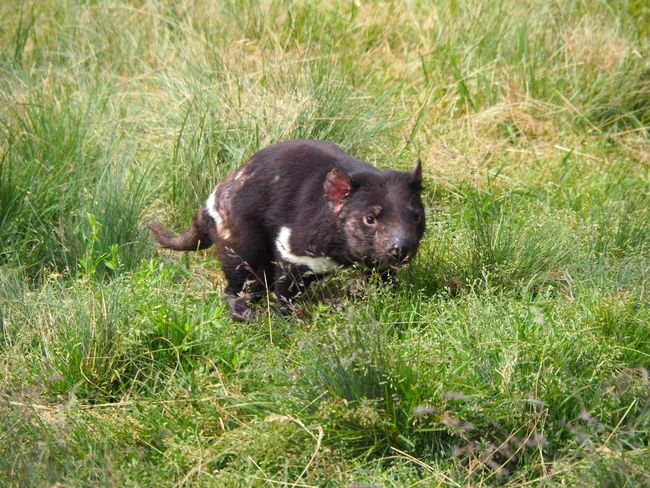
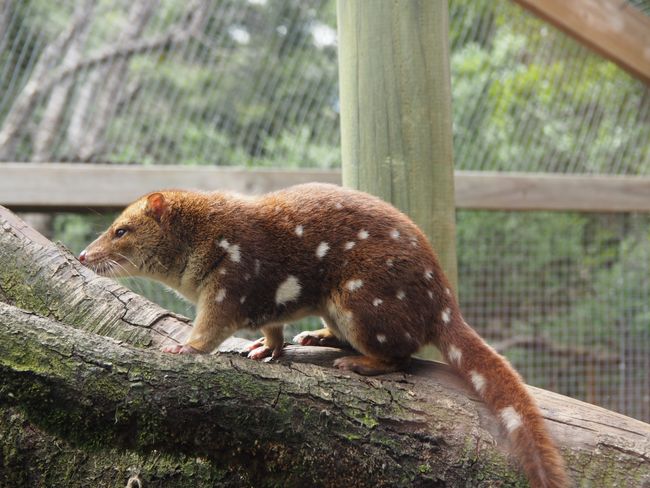
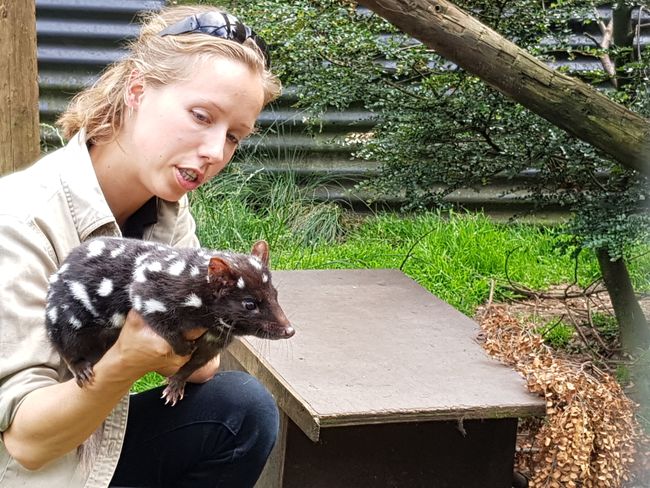
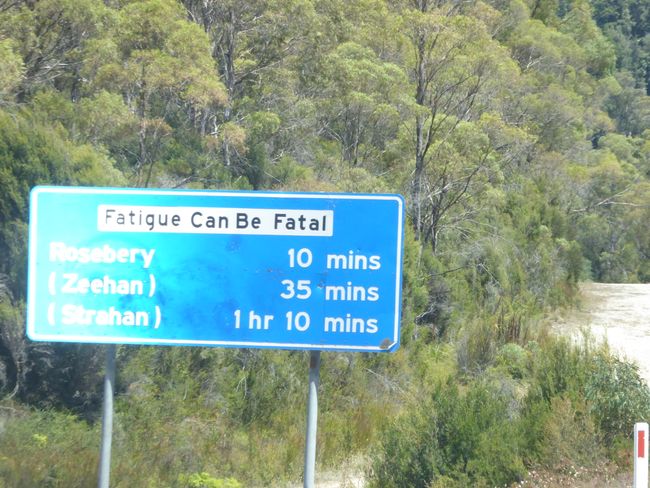
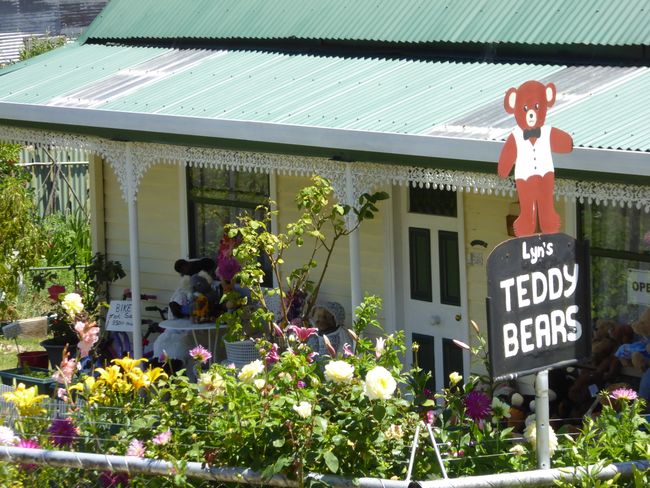
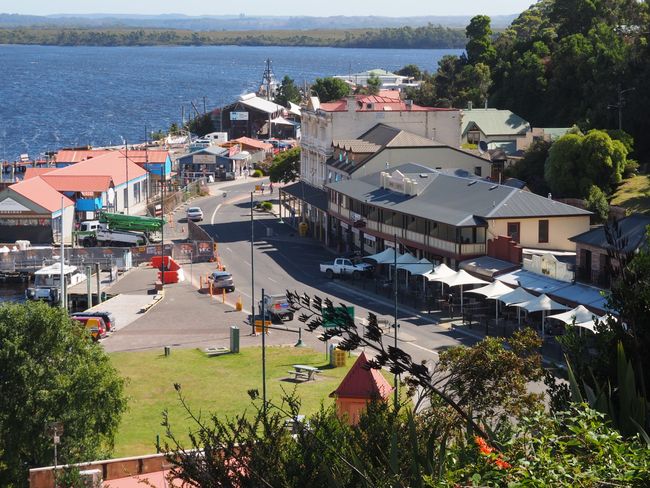
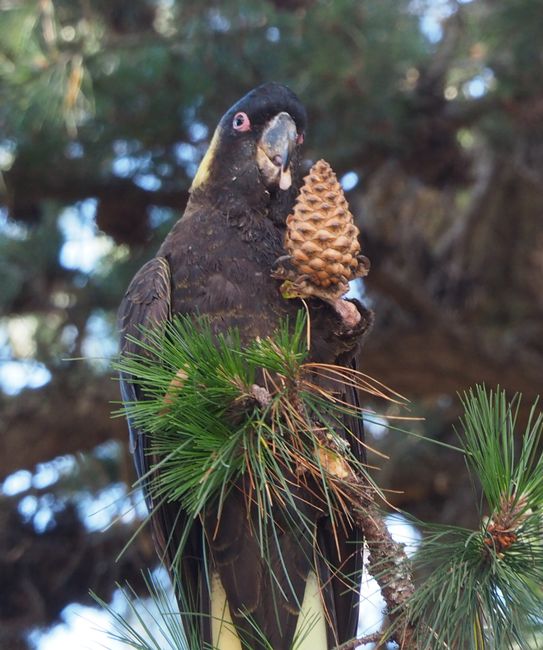
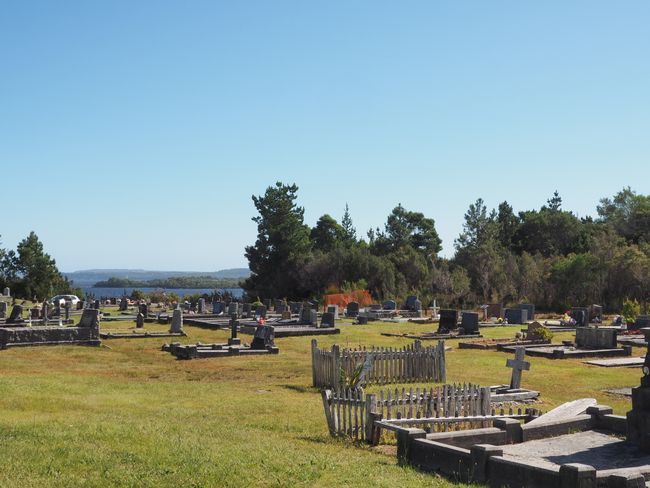
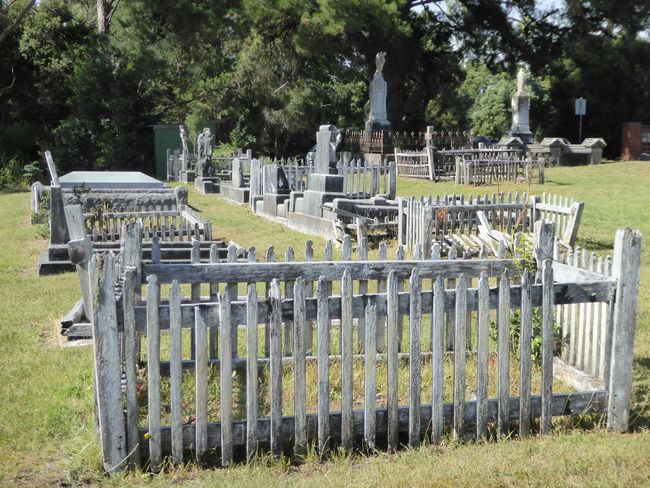
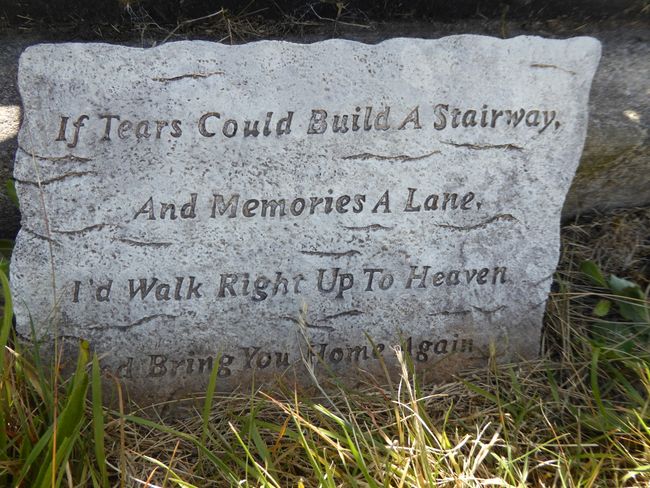
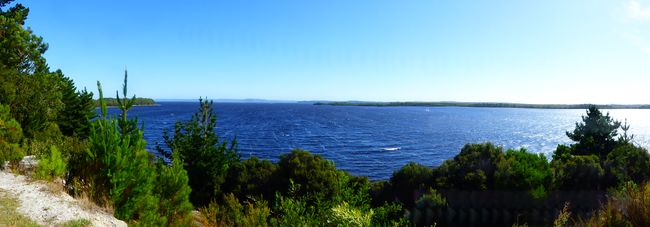
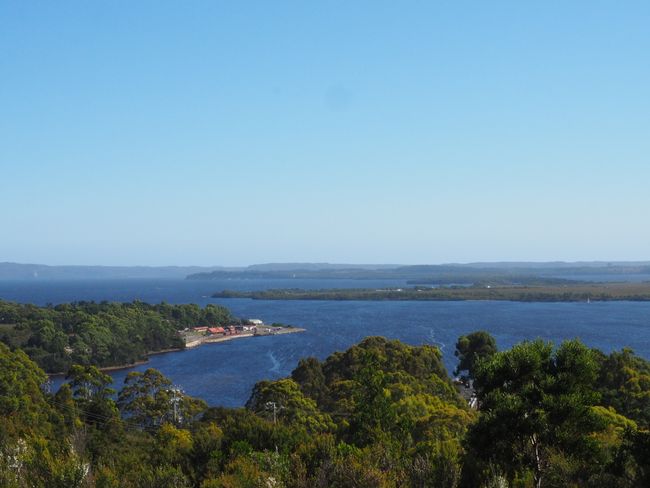
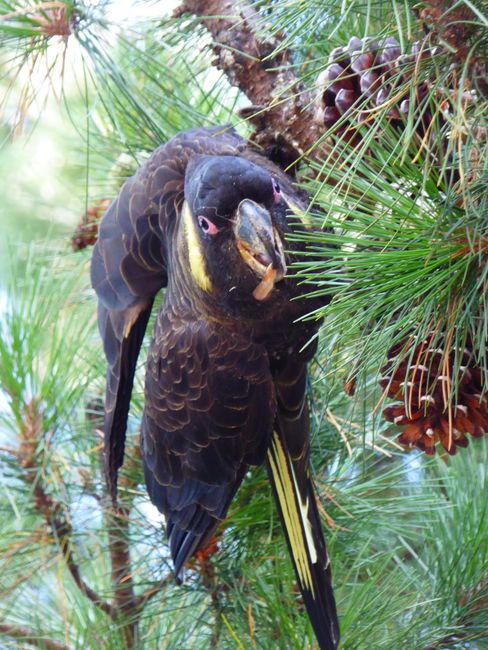
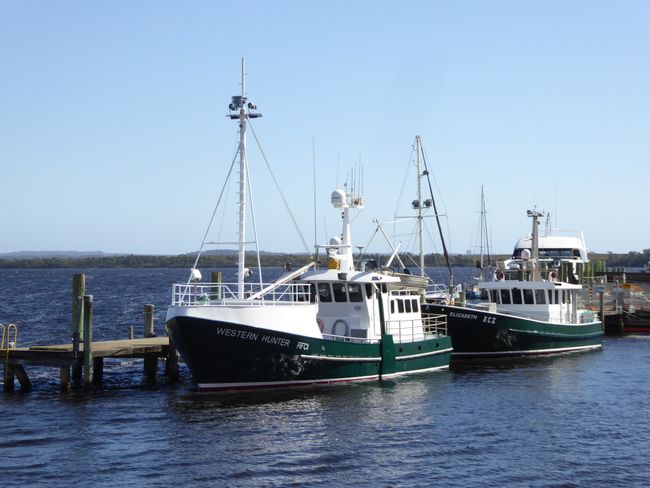
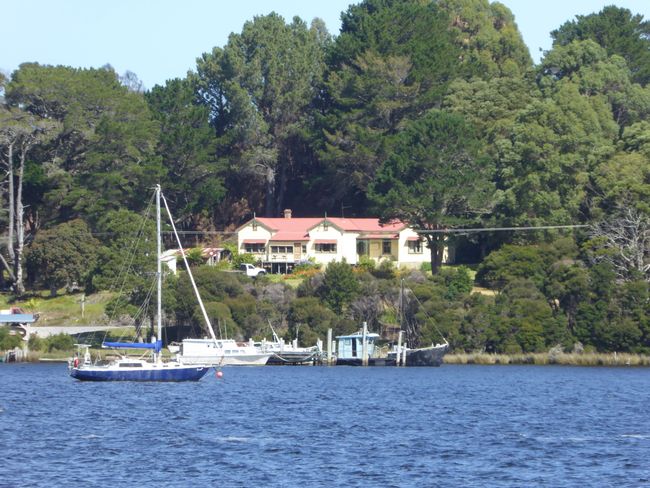
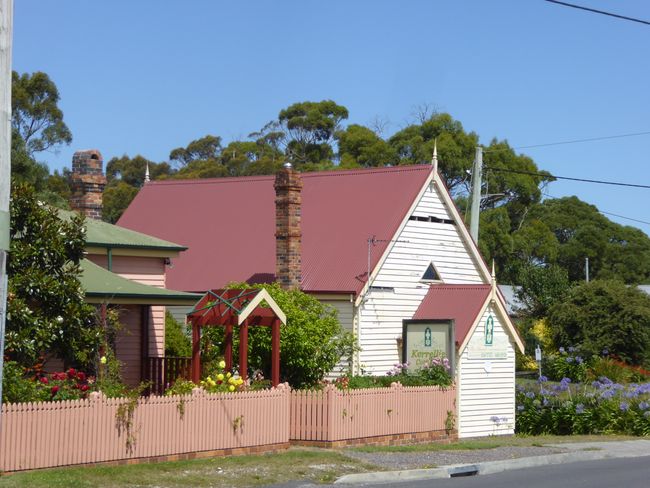
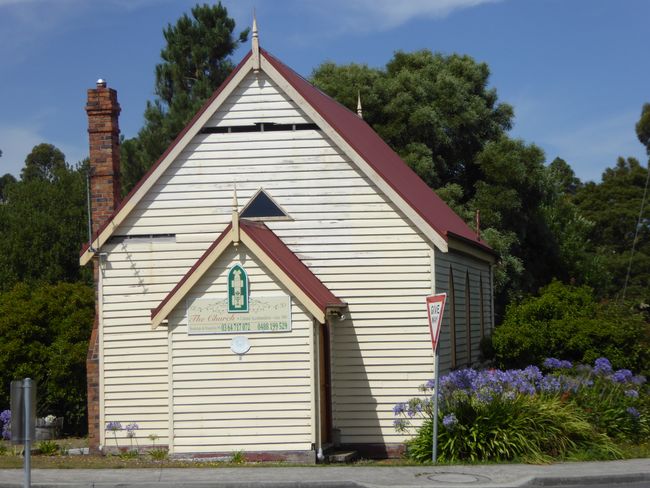
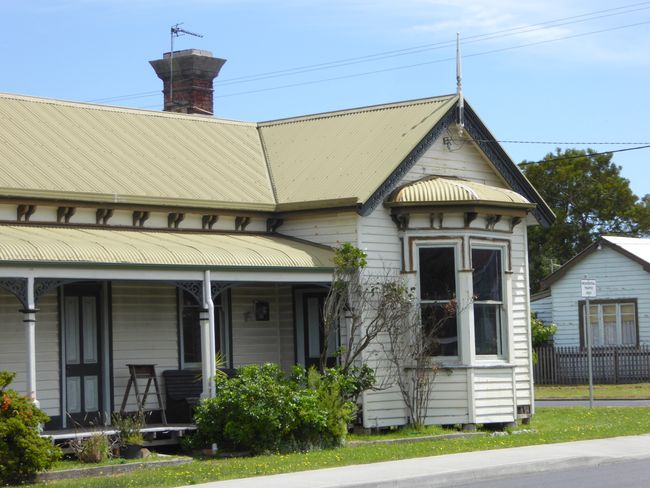
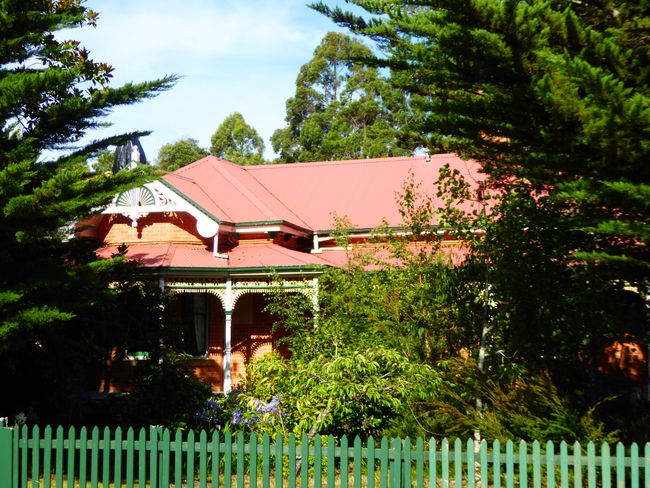
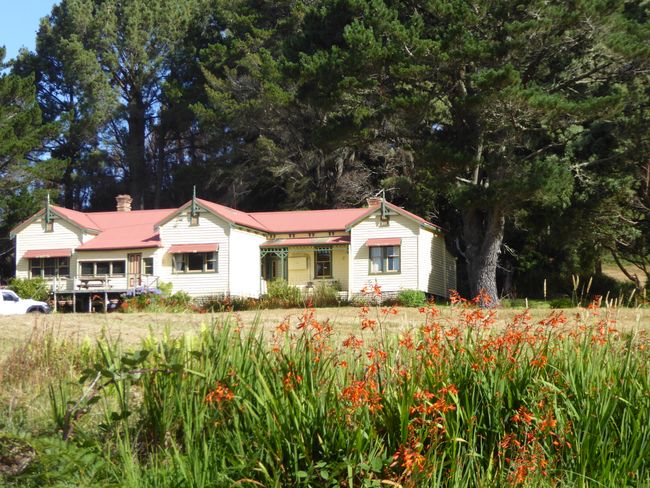
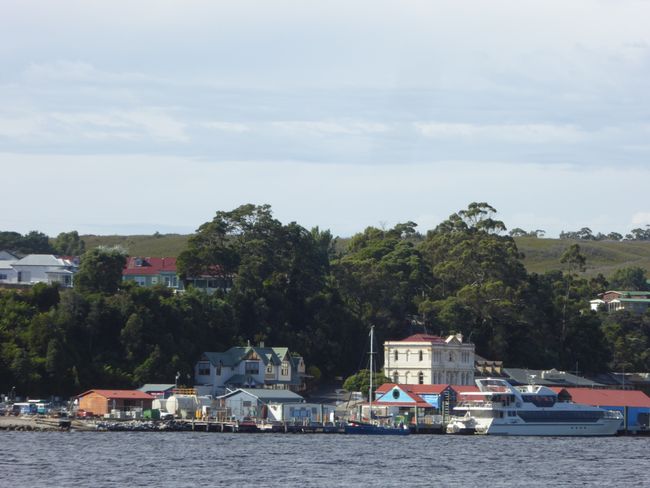
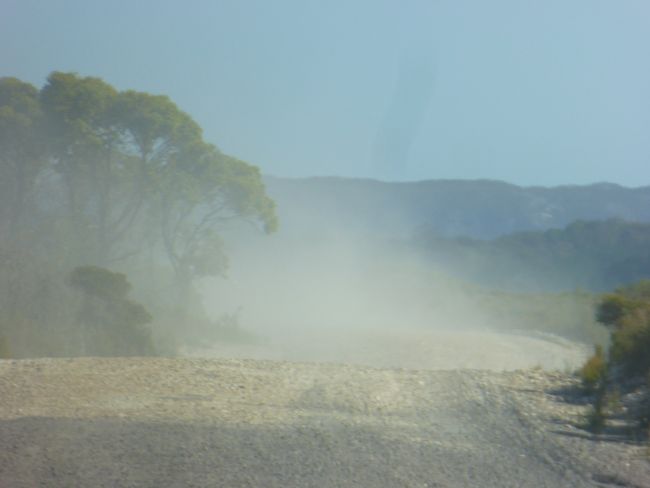
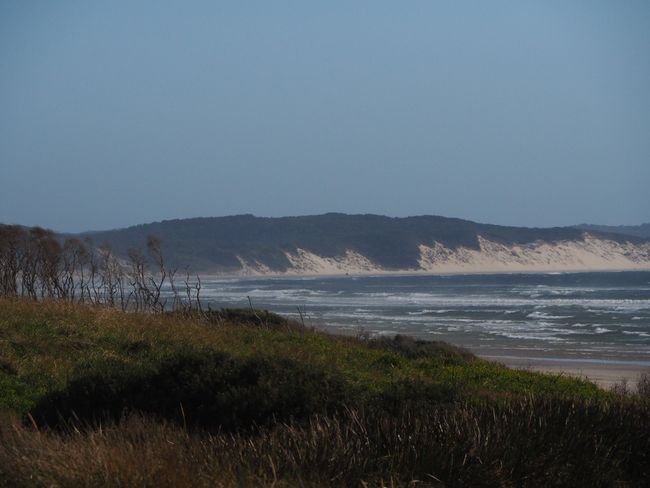
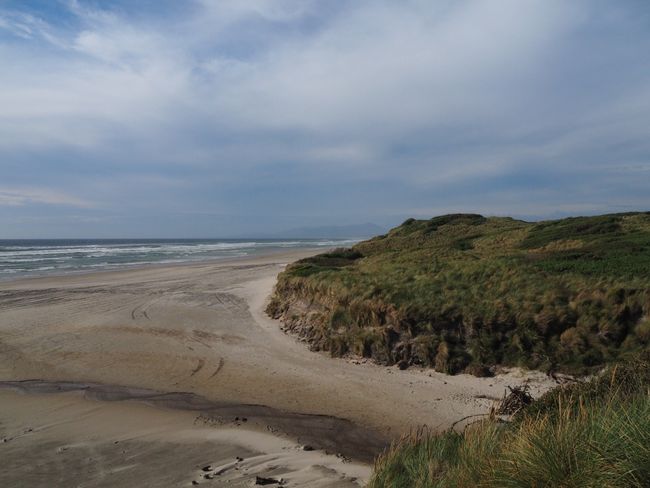
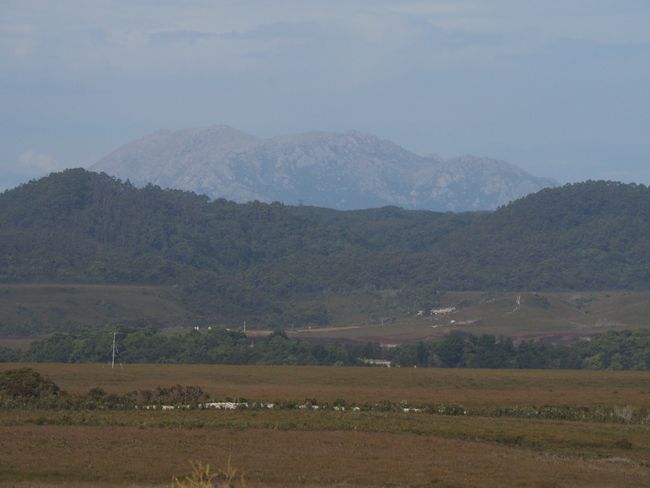
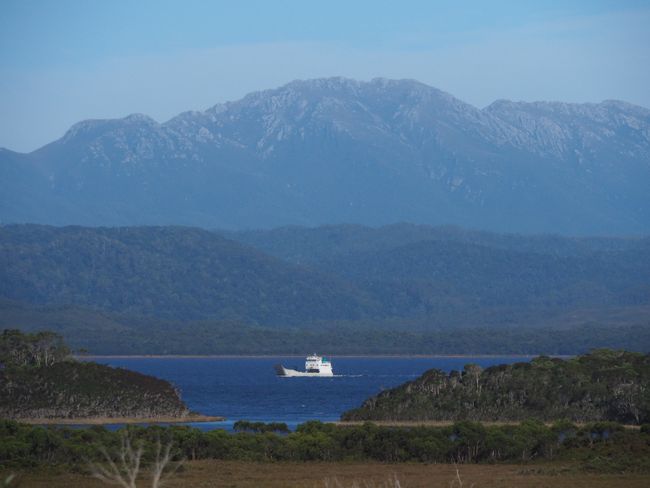
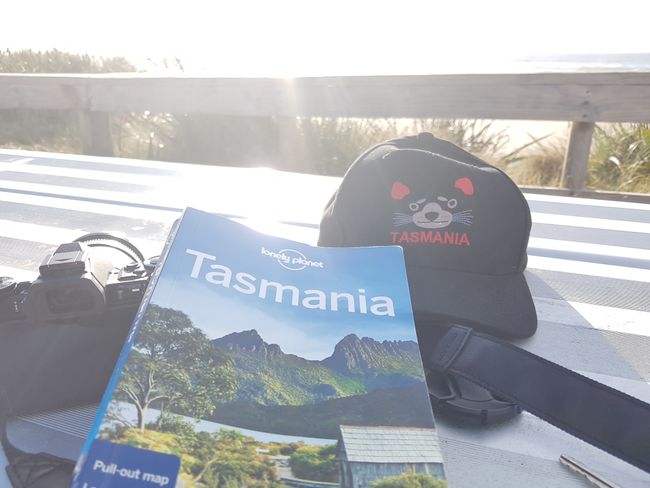
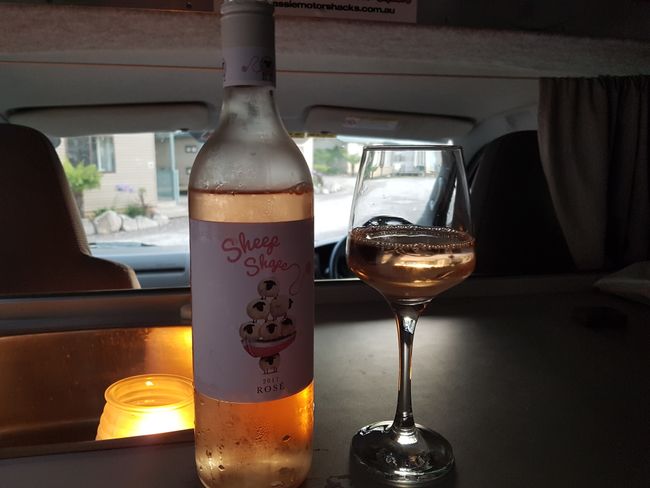
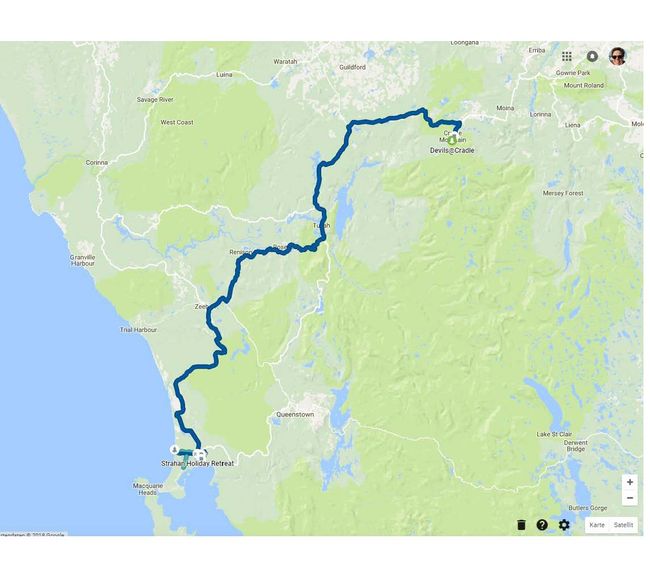
ಸುದ್ದಿಪತ್ರಕ್ಕೆ ಚಂದಾದಾರರಾಗಿ
Saturday 20.01.18
The alarm clock goes off at 7.40am, because I don't want to be woken up by the tourists parking around me, but rather go for a discreet walk to brush my teeth. Planned and done, and so I sit shortly afterwards with a coffee in my camper door open, eating my cereal and watching what's going on outside. The first people arrive at 8am. The visitor center doesn't open until 9am. I sit comfortably in my camper and write postcards. I realize that I still need 15 cards and get some more at the visitor center.
I want to go to "Devils@Cradle" now, which is about 1km away from here. A breeding facility and also a breeding station mainly for Tasmanian devils. Highly praised and I'm happy that I can do that today due to the unplanned overnight stay here, because yesterday it wouldn't have worked anymore and if I had returned to Waratah, I wouldn't drive 60km east today just for that, if I actually want to go southwest. It's all a wonderful coincidence that it now works. Since I have a guided tour there at 10.30am, I leave at 10.20am, but I'm the only visitor there and they only want to do the tour with at least 2 people. So, I walk around alone for a few minutes after chatting with the ranger. Then 5 or 6 other people show up and the tour starts with a small delay.
Unlike Nature World, where I was on the east coast, this facility is more focused on breeding the devils rather than nursing injured or orphaned animals. The goal is to have genetically pure devils and to remove the cancer viruses from the genes that have decimated the devil population since 1996, not only in Tasmania, but also on the mainland, to such an extent that they are now considered an endangered species.
Devils facial tumor disease (DFTD) has been plaguing the devil population for over 20 years.
This type of cancer only affects the face and lips, and within a few months it always leads to the death of the animals, who suffocate or starve. It is horrible to see the photos of it. This cancer is transmitted through contact between the animals. It is transmitted through fights as well as through genes. Devils mate with each other regardless of their degree of relatedness, so that sick animals also reproduce. However, mother animals often die before or after giving birth. Then the dead animals fall prey to other animals of the same species and the virus spreads further. Even after 20 years, there is still no cure.
Australia has 25 facilities where devils are now bred. Devils@Cradle is one of them. There are 45 devils living here and they are not necessarily released back into the wild, but rather sent to other parks to breed with genetically healthy animals there. So far, around 900 animals have been bred and housed in these 25 facilities, which would be able to establish a completely new and healthy population in case the devils become extinct in the wild due to the virus.
The animals are constantly screened here, there are recommended devils that are flown to other parks for breeding in order to truly build up the gene pool.
Devils only live to be about 5-7 years old and become sexually mature after 2 years. A maximum of 4 young can be produced in one litter, as the females only have 4 mammary glands in their pouch. However, up to 30 young can be produced, weighing only 0.1 or 0.2g. Since the young crawl into the pouch and there is only room for four, the other young die and are eaten by the mother as highly protein-rich food. Due to the short lifespan of the animals, a mother can give birth a maximum of 3 or 4 times.
There is no bond between mother and father, and the mother stays with the young for about 8 months. Devils are the largest predators among marsupials and they are solitary animals. In order to prevent the young from ending up in the dirt, the pouch opens backwards instead of forwards, so that the dirt doesn't fly into the eyes when digging.
Devils are the largest type of so-called carnivorous marsupials. They got their name because they growl and squeak a lot, and people probably heard the animals causing mischief in the bush. They are pretty stupid, have a very small brain, have a massive skull with a hugely powerful muscle structure that holds strong jaws that crush everything they eat. They eat everything, fur, feathers, skin, bones - the animals don't care. They are not hunters, they are too slow and they have bad eyesight. However, their nose can smell prey from a distance of 10km and they have good hearing. They eat carrion, but also injured animals that cannot flee.
The animals are able to consume prey that is 40% of their body weight and can then live for 3 weeks without eating. They live in burrows and prefer forested areas.
But they love to bask in the sun and then lie completely flat and enjoy the warmth.
When devils get older, their fur turns brown. Before that, they are black.
Devils@Cradle also has quolls, spotted-tail quolls, which are really cute. The southern quoll does not have spots on its tail, while the spotted-tail quoll has a dotted tail.
I walk around here alone for a while after the tour, find the scuffles of the little devils with their funny hoarse cries really amusing. Dozens of photos and videos later, it's already 12.30pm and I'm back in the car and heading southwest.
I reach Strahan (pronounced Strawn) at 2.30pm. The last part of the route is once again just a winding road, up and down, and I'm exhausted from changing gears.
According to the guidebook, Strahan is supposed to be a very nice place, with beautiful houses and really nice. Unfortunately, this cannot be determined at all and the main campground is also full. Fortunately, another one has opened across the street. It seems to me that these are more like holiday homes that have attached a few pitches at some point. At $45, this is the most expensive campground (powered site) I have had on the whole trip. The pitch right next to the toilets is not that great either, and at night a floodlight at the toilet cabin shines directly into my camper. There is free internet that doesn't work.
Actually, I wanted to walk to "Downtown", but initially, it gets too cold for me after 10 minutes, despite the sun and the cold wind, so I turn around to get my jacket and then fortunately decide to take the whole camper with me. The path into town didn't seem really nice to me and that's how it is. The path is long and at the end there is a row of old houses that is about 50m long and that's it. I ask at the tourist information, which is still open, where all the old houses are. They look rather puzzled, then roughly point to the slopes behind the harbor basin and say, yes, up there are some interesting old villas. Otherwise, the attraction in Strahan is a boat trip, but the last one is at 3pm and there are none today.
I'm a bit annoyed that I drove to this remote place where there is not what the guidebooks say. Probably someone copied from someone else again. I drive up to a water tank and look down on the little town and the islands behind it and the water. You have a great view of the town from a hotel halfway up.
On the other side of the bay, the historic West Coast Wilderness Railway stops, coming from Queenstown. I had also considered doing that. It's a good thing I didn't. Here, where the train arrives, Strahan is still about 3-4km away and it's not a walking path but a road. It's kind of stupid when you arrive in Strahan, but it's only accessible with an 8km walk there and back.
But just next to the train station, there is a road up to the left and you reach an old cemetery with graves that are clearly over 100 years old. From here you have a great view of the bay towards Macquarie Heads. When I return to the car, stuff keeps falling from the top of the fir tree. Two yellow-black parrots are sitting there, snapping off branches to get to the big pine cones, which they then enjoy cracking. Finally, I find a relatively intact large pine cone on the ground, which I want to take to Berlin and place next to the one from Lake Tahoe.
Actually, I want to drive to Macquarie Point now, practically the westernmost point of the area here. But of the 13km there, 10km are a really bad gravel road. And the idea of having to drive another 10 x 2 km of gravel road with all the rumbling and shaking doesn't really excite me, so I give up, turn around and head to Oceans Beach - at least only 3km of gravel.
A huge long beach of about 7km in length lies before me. In the distance on the left, you can see high dunes, on the right in the distance, mountains. Soon I am alone here and enjoy the sun, the sound of the sea, the peace before other people and the view.
I don't want to wait until sunset today. I'm getting hungry slowly, drive back to Strahan and get grilled fish at Molly's Café. Molly's Café is a diner with an astonishing variety of pizza, fresh fish, homemade salads, drinks, desserts, and it's right next to the campground. I sit in the evening sun in front of the diner, because my camper is completely in the shade of tall firs and the pleasure of eating next to the toilet is not so tempting.
When I get back to my pitch, the surrounding pitches are also filled with fairly large motorhomes. Some people are standing no more than 30m away at a small bridge over a stream where you can see platypus. But I'm too lazy now and have seen enough platypus already.
Due to the occupancy of the campground, there is now a busy foot traffic next to my camper to the toilet/shower cabin. In addition, the spotlight from above - this is really not my favorite campground - and all this for $45. I do something that I rarely do, I close all the curtains, not only to avoid the gaze, but also to have it dark.
ಸುದ್ದಿಪತ್ರಕ್ಕೆ ಚಂದಾದಾರರಾಗಿ
ಉತ್ತರ
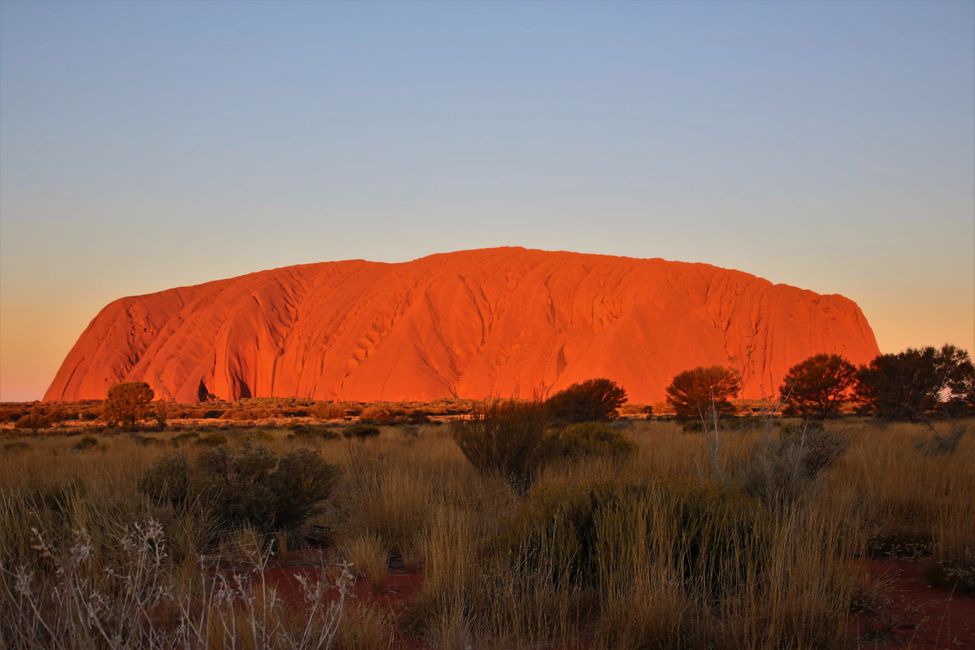
ಪ್ರಯಾಣ ವರದಿಗಳು ಆಸ್ಟ್ರೇಲಿಯಾ
